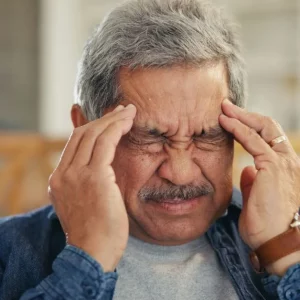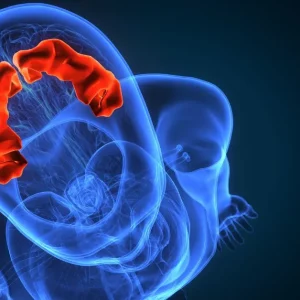Tingling sensations in the arms and legs are common after a stroke. Despite the fact that just over half of all survivors experience tactile sensory impairments, these symptoms are often overlooked by medical professionals since they do not severely impact one’s ability to perform daily activities.
However, if tingling sensations are persistent, they can greatly decrease quality of life for survivors. Understanding the causes and treatment methods for tingling sensations after a stroke can help to guide survivors through their recovery process.
This article explains why tingling sensations after stroke occur and provides recommendations on how to address these sensations. An overview of how rehabilitation can stimulate recovery is also included. Please use the links below to jump directly to any section of this article.
Causes of Tingling Sensations After Stroke
Although many survivors experience tingling sensations after stroke, not all individuals understand why the tingling is occurring. While a tingling sensation may be caused by stroke, it can also be caused by other conditions, and may even be a sign of stroke recovery.
When a stroke occurs, the functions controlled by areas of the brain that have sustained damage are often impacted. Survivors experience different secondary effects of stroke depending on where in the brain the damage occurred.
Tingling sensations after stroke may be caused by damage in specific areas of the brain, such as the thalamus or the parietal lobe. The thalamus is responsible for relaying sensory information to different areas of the brain, while the parietal lobe plays a primary role in interpreting sensory information. Therefore, a stroke in either of these areas may result in sensory changes, such as numbness or tingling after stroke.
Although a sudden onset of tingling after stroke is likely related to the area of the brain that was damaged, some stroke survivors may experience tingling due to unrelated medical complications. For example, unmanaged diabetes can cause tingling in the hands and feet due to peripheral neuropathy.
It is also important to note that sometimes tingling is actually a sign of recovery from stroke. Some survivors with spasticity (involuntary muscle tightness) report tingling and/or twitching in their affected muscles as the spasticity begins to decline. However, even in these cases, the tingling can still be addressed if it persists and is affecting one’s quality of life.
Survivors should always work with their medical team for a formal diagnosis if they begin to experience tingling sensations after stroke. A proper diagnosis is essential to know which treatments may be most effective.
Treatments for Tingling Sensations After Stroke
After a stroke, many survivors, doctors and therapists focus more on motor recovery rather than less noticeable effects, such as sensation changes. However, there are treatments available that may help survivors to decrease tingling sensations after stroke and restore more typical sensations.
The best method to effectively reduce tingling sensations after stroke depends upon the original cause of the altered sensation. For instance, if tingling stems from a non-stroke-related complication like diabetes, then managing that condition will be the best approach.
However, many survivors experience tingling sensations due to the neurological impact of stroke. Although tingling sensations may eventually go away without treatment (a phenomenon known as “spontaneous recovery”), it is best to take action through rehabilitative strategies.
Sensory Re-education
Generally, the best treatment method for survivors who experience tingling sensations as a secondary effect of stroke is sensory re-education. This rehabilitative technique involves providing sensory stimulation to the affected areas of the body, primarily in the form of tactile (touch) input.
There are many types of sensory re-education exercises. Texture hunting, for example, involves searching through a bowl of uncooked rice for various objects using the affected (tingling) hand. Other exercises involve rubbing various textured materials against the skin, comparing the sensations experienced in the unaffected and affected areas of skin. Mindfully focusing on the sensations experienced during these tasks can help to stimulate recovery.
Electrical Stimulation
Using electrical stimulation can also help to reduce tingling sensations after stroke. Electrical stimulation involves sending electrical impulses through affected areas of the body through electrodes placed on the skin. While most research on electrical stimulation is focused on its positive effects on motor functions and pain reduction, there is some research that suggests it can also help with impaired sensations.
For example, one study suggests that using an electrical stimulation device designed to stimulate the skin as well as the muscles can improve tactile acuity and promote adaptive changes in the brain. However, the research remains limited, and individuals with sensation impairments should always use electrical stimulation under the supervision of a therapist to avoid further injury.
Mirror Therapy
Mirror therapy is a treatment technique that involves placing the affected extremity behind a mirror, allowing the mirror to reflect the unaffected extremity in its place. Looking at the reflection of the unaffected extremity in the mirror tricks the brain into seeing the affected extremity functioning typically, promoting adaptive changes in the brain and recovery.
Although mirror therapy is often used to help recover motor functions in the upper extremities, it also has shown promise as an intervention to improve sensation. Research has shown improvements in tactile sensations using mirror therapy, especially when it used in conjunction with other techniques such as sensory re-education.
By practicing the above therapy techniques under the direction of a therapist, survivors can help retrain the brain to interpret the senses accurately. While sensory rehabilitation is not guaranteed to make tingling sensations fully disappear, it can often greatly reduce it.
The outcomes of sensory interventions are continually being researched. One recent review of 38 studies focused on the effectiveness of sensory retraining interventions found that although the research available is promising, further research is needed to determine which strategies should be most often recommended.
It is important to remember that the stroke rehabilitation field has made massive gains in the last couple decades. New modalities are being discovered constantly, based on evidence-based research. With this in mind, even individuals who have not experienced complete relief from tingling sensations after stroke may be able to recover, even long after their stroke occurred.
Importance of Rehabilitation for Improving Tingling Sensations After Stroke
Working with a physical or occupational therapist to address tingling sensations after stroke is an excellent way to begin on the path to recovery. Therapists will often also recommend using a home program to promote an optimal recovery of sensory functions.
This is because adaptive changes within the brain are stimulated by massed practice, or consistent repetition of exercises involving the affected functions. Practicing exercises and activities focused on sensory stimulation teaches the brain that there is a demand for these functions. This, in turn, activates neuroplasticity, or adaptive brain rewiring.
Neuroplasticity allows healthy areas of the brain to assume control of functions associated with damaged brain areas, promoting lasting improvements. Activating neuroplasticity is essential for achieving an optimal recovery. Therefore, consistently working on rehabilitation exercises, both during therapy and at home, is the most effective way to promote neuroplasticity and recovery after stroke.
During the recovery process, it is essential to take appropriate precautions to avoid further injuries due to impaired sensation. For example, survivors experiencing tingling sensations in the hands should be especially cautious when heating up food, while those with impairments in the feet should always wear shoes when walking. An occupational therapist can outline further safety precautions survivors should consider based upon which areas of the body are affected.
Understanding Tingling Sensations After Stroke
Tactile deficits, including tingling sensations, are fairly common aftereffects of stroke. While determining the cause of tingling sensations after stroke may require the help of one’s medical team, doing so is important as it can help to guide treatment.
When tingling sensations are a result of the neurological impact of stroke, sensory re-education is generally the most effective treatment. Electrical stimulation and mirror therapy have also shown promise as treatment options for addressing tingling sensations after stroke.
If the tingling sensation is not caused by stroke-related damage, there may be other factors that require medical attention. Always exercise caution when new changes after a stroke occur and seek a formal diagnosis. Survivors should work closely with their medical team to maximize their chances of a full recovery.









